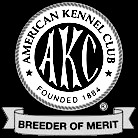|
|
|
Julie
Borst Reed |
|
u |
| u |
| Breeder
Ethics Questionnaire |
| u |
| Puppy Comes Home |
| u |
| u |
| Puppy Temperament Testing |
| u |
| Recommended Diet |
| u |
| FAQs
About Feeding Raw |
| u |
| REAL Dog Food |
| u |
| Fleas 101 |
| u |
| Standard
Poodle Health Concerns |
| u |
| Recommended Vaccination Schedule |
| u |
| Vaccination Decisions |
| u |
| Neutering |
| u |
| Photo Gallery |
| u |
| A Breeder's Life |
| u |
|
Interview
with Dog Breeders' Guild |
| u |
| Poodle Funnies |
| u |
| Tiara Home |
| u |
| u |

|
|
|
Frequently
Asked Questions Concerning Feeding a Raw Diet
The following are some answers to often asked questions about feeding
raw. They are lifted from the Wellpet frequently asked question page on
their website. I direct you there for more answers to your questions.
Wellpet members follow a variety of feeding programs, depending on the
particular needs of their animals. Most members advocate, at the least,
the addition of fresh foods/meat/bones to a high quality commercial food.
Some members cook for their dogs and others feed raw food. Thus, expect a
variety of responses to questions regarding nutrition!
Question: Aren't commercial foods a complete diet for animals?
Commercial diets of themselves are generally not considered the best
source of nutrition for your pet for a few reasons:
1. Cooking destroys the live enzymes found in raw foods.
2. Ingredients in commercial foods are not always high quality.
3. Preservatives may adversely affect your pet's health.
4. Commercial diets contribute to periodontal disease.
Question: Do you actually feed your animals raw bones?
Yes! Wellpet member experience feeding raw bones ranges from just
starting to 10 years or more. Bones most often fed are chicken and beef
bones.
Question: Why should I feed my dogs raw bones?
1. Bones are the best toothbrushes known to man...er, dog! Tooth decay
is expensive both in terms of canine dentistry and potential disease that
can enter the bloodstream from the decayed teeth.
2. The nutrients in a RAW bone are natural, perfectly balanced and
unchanged. The minerals and essential fatty acids, proteins and vitamins
are, on nature's terms, in perfect harmony. Not only calcium is present -
but many other needed minerals.
3. The RAW bone has the anti-oxidants and naturally occurring enzymes to
help build a strong immune system and keep the dog's internal organs in
good shape. All natural enzymes are killed when food is cooked...
4. The exercise required to gnaw and pull and mouth and rip and crunch is
both great physical and *mental* stimulation for the dog. The jaw and neck
muscles get a work out - the leg muscles get a work out; even the back
muscles need to work hard and, last but not least,
5. They *enjoy* the whole experience! (Adapted from a post by Andrea
Madeley, Wellpet member)
Question: Should I be concerned about bacteria and parasites?
Raw meat may indeed contain bacteria and parasites. However, a dog's
gastro-intestinal system is constructed and functions much differently
from that of a human, so generally, a dog can handle normal numbers of
both bacteria and parasites.
1. A dog's stomach acids are more powerful than human stomach acids;
thus food is digested much more rapidly.
2. Most digestion takes place in the stomach.
3. A dog's intestinal tract is much shorter than man's is, and digested
food passes through more quickly, providing less opportunity for harmful
bacteria and parasites to become established. As an added precaution, some
members treat their raw meat with GSE or food grade H2O2 to eliminate
surface bacteria such as salmonella or e. coli. Julie Borst, of Tiara
Poodles, notes the use of apple cider vinegar to assist the
gastro-intestinal system in dealing with the bacteria and parasite load
associated with feeding raw meat. It is also a great benefit to your pet
to locate a source of organically raised and processed meat. Devoid of
antibiotics and steroids these meats are also of benefit as they are hand
processed. This lessens the amount of salmonella due to ruptured
intestines during processing at the packaging plant.
Question: Is raw food good for every animal?
There is a caveat to feeding raw food. IF your pet is not in good
health, it may not be able to cope with the challenge of switching from
commercial to raw food. A few members have reported serious problems when
they started to switch sick animals to raw foods. It may be that the
intestinal wall of an animal raised primarily on commercial food is
thinner than those on raw diets, and, thus, an unhealthy animal may not be
able to handle the increased demand on their system of raw food and/or its
accompanying bacteria/parasite population. An unhealthy animal ought to be
restored to health before trying to switch to raw foods.
For more Information http://www.ListService.net/wellpet/index.htm
Wellpet Website
A special thanks to Judy A. Burch, Poodle Support Group Chat, for
posting this recommendation concerning frequently asked questions (FAQ).
Judy Burch ALSO wrote (1-7-99): Here are a couple of websites that list
ingredients in dog foods. They also list phone numbers and such to get in
touch with companies. You could spend a lot of time at these sites
comparing the different foods: http://www.iei.net/~ebreeden/kibble.html
& http://home.hawaii.rr.com/wolfepack/foodcht2.html
Excellent source of info for dog food comparisons. It confirms many of the
list members' opinions on certain brand names. Not only do these sites
contain the ingredients listed, but also what these ingredients really
are.
Home
| About
| Puppy Comes Home
| Equipment
Recommended Diet |
FAQs About Feeding Raw
Recommended Vacc. Schedule |
Vaccination Decisions
Breeder Ethics Questionnaire |
Photo Gallery
Recent
Litters | A
Breeder's Life
| The Dapper Dog by TIARA
|
|
||
|
|
|
|
|
Site
designed by POL |
||




